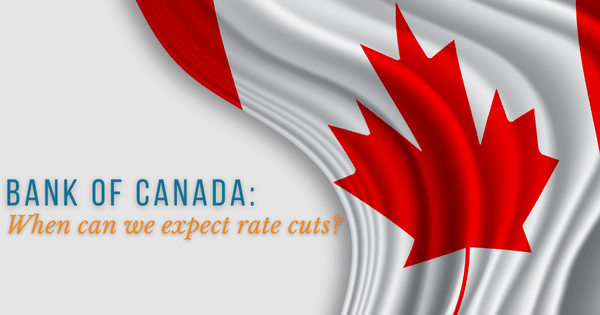Last week, important data came out that led analysts to believe that the Bank of Canada wouldn’t be raising their key lending rate yesterday, and they didn’t. Good news for anyone with a variable or adjustable rate mortgage, an home equity line of credit, personal lines of credit, car loans and any other credit based on Prime Rate. Wouldn’t a Prime rate decrease be nice? Here’s some information about why we might not see a rate cut until the second quarter of 2024.
Bank of Canada’s most recent announcement
The Bank of Canada recently made its final interest rate decision of the year, choosing to keep the overnight policy interest rate at 5%, as widely expected. However, the bank’s statement revealed ongoing concerns about potential risks to the inflation outlook, indicating a readiness to raise the policy rate further if necessary.
Inflation facts and housing market commentary
In terms of inflation and the housing market, the slowdown in the Canadian economy has led to a reduction in inflationary pressures across various goods and services. Despite a decline in gasoline prices contributing to a 3.1% decrease in the Consumer Price Index (CPI) in October, “shelter price inflation” increased due to accelerated growth in rent and housing costs, along with sustained high mortgage interest costs. The bank’s preferred measure of core inflation has been in the range of 3.5-4%, with the October data leaning towards the lower end. Wages, however, continue to experience growth at a rate of 4-5%.
Canadian economic performance
Examining the Canadian economic performance, it was noted that economic growth stagnated in the middle quarters of 2023, with real GDP contracting by 1.1% in the third quarter, following a 1.4% growth in the second quarter. Higher interest rates were observed to be restraining spending, with consumption growth near zero in the last two quarters, and business investment essentially flat over the past year. The labor market continues to ease, with slower job creation compared to labor force growth, declining job vacancies, and a modest rise in the unemployment rate. Overall, current data and indicators for the fourth quarter suggest that the economy is no longer experiencing excess demand.
Global economic performance and outlook
On the global stage, the bank highlighted a continued slowdown in the global economy and easing inflation. In the United States, growth has been stronger than expected, led by robust consumer spending, but it is expected to weaken in the coming months. Euro area growth has weakened, and lower energy prices have alleviated inflationary pressures. Notably, oil prices are $10-per-barrel lower than assumed in the Bank’s October Monetary Policy Report. Financial conditions have eased, with long-term interest rates unwinding some of the sharp increases seen earlier in the autumn, and the US dollar weakening against most currencies, including Canada’s.
Summary
In summary, despite signs that the bank’s monetary policy is moderating spending and alleviating price pressures, the decision was made to maintain the policy rate at 5% and continue with the normalization of its balance sheet. The bank expressed ongoing concerns about risks to the inflation outlook and readiness to raise the policy rate further if needed. The Governing Council emphasized the importance of sustained easing in core inflation and remains focused on the balance between demand and supply in the economy, inflation expectations, wage growth, and corporate pricing behavior.
What’s next?
Reiterating its commitment to restoring price stability for Canadians, the bank hinted at the possibility of rate relief in the future. The next interest rate announcement is scheduled for January 24, 2024.
In the meantime, give me a call to discuss financing options that can empower you in navigating the current economic cycle and future challenges.



Leave A Comment